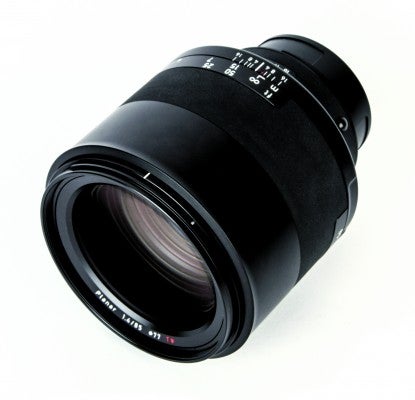The Zeiss Milvus 85mm f/1.4 fast 85mm lens occupies a magical place in the hearts of many for its perspective and capacity for shallow depth of field. But what does the new Zeiss Milvus add? Damien Demolder finds out
Zeiss Milvus 85mm f/1.4 review
Zeiss Milvus 85mm f/1.4 – Image quality

The clarity, contrast and sharpness of the lens have maintained clear separation between the fine tonal shifts – even in the darker midtones
I thought the resolution of the Milvus 50mm was exceptional, but in some ways this 85mm goes a step further. Corner resolution wide open is nothing short of amazing, which is fabulous as it is the weak point of most lenses of this type. In fact, corner resolution wide open is better in this lens than some lenses manage in the centre of their circle, even with the aperture closed 2 stops. Indeed, the corners read just as sharp as the centre in our software-driven lab tests at f/1.4. Stop down to f/2 and the centre sharpens up further, with an impressively high reading that indicates excellent fine-detail gathering.
The ability to collect information increases as the aperture is closed to f/4 where it stabilises while the corners close the very small gap between them by f/5.6. Resolution decreases slightly to f/11, and a bit more by f/16. Portraits shot at f/4 and f/5.6 will be brimming with crisp detail – so much, in fact, that some delicate sitters might be glad of a soft-focus filter.
A common issue with longer lenses with wide apertures is the chromatic fringing that has the power to influence the apparent colour of finely detailed areas, as well as slightly reduce contrast and resolution. I can’t tell you that chromatic fringing is completely absent in images from this lens, but I can say they are extremely moderate and only occur in pictures taken with the widest apertures and in out-of-focus areas. By f/3.5, all signs of it are gone.
It is at f/2.8-f/5.6 that we can best study the effects of the aperture on the way out-of-focus highlights are rendered by this lens. Where a light bulb is caught in a background at f/3.5, it can be rendered as a distinct nonagon, but where the highlight is less obvious, such as in reflections and bright objects in the distance, the rendering feels more rounded and natural. The discs of out-of-focus highlights remain mostly circular right to the edges of the frame, which is quite an achievement. Backgrounds are very smooth and not distracting, even at f/5.6 where the shape of the nine-bladed aperture plays a greater part in directing the light as it passes through the lens.
In all, this lens produces images of exceptional quality, although it takes some skill to get the most out of it.






